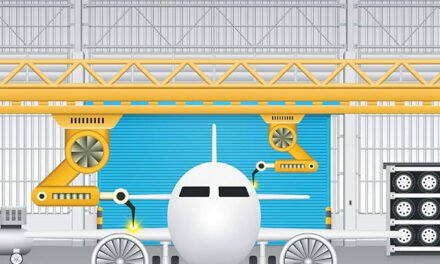Unmanned Ground Vehicles (UGVs) and autonomous drones are transforming defense operations by enhancing operational efficiency, reducing risks to personnel, and expanding capabilities in complex and high-threat environments. These technologies provide critical support in reconnaissance, combat, logistics, and other domains. Here’s a detailed look at their roles in defense operations:
1. Roles of UGVs in Defense Operations
UGVs are versatile, remotely operated or autonomous vehicles designed for various ground-based military applications.
a. Reconnaissance and Surveillance
- Role:
- Gather real-time intelligence in dangerous or inaccessible areas without risking personnel.
- Examples:
- UGVs equipped with cameras, sensors, and radar for perimeter surveillance or forward reconnaissance.
- Example: iRobot PackBot used for tactical reconnaissance.
b. Combat Support
- Role:
- Engage in combat roles, such as providing fire support or neutralizing enemy positions.
- Examples:
- Armed UGVs with machine guns, grenade launchers, or anti-tank missiles.
- Example: Uran-9, a Russian UGV equipped with a 30mm cannon and anti-tank guided missiles.
c. Explosive Ordnance Disposal (EOD)
- Role:
- Identify, disarm, and safely dispose of improvised explosive devices (IEDs) and unexploded ordnance.
- Examples:
- Robots with manipulator arms and bomb-detonating capabilities.
- Example: TALON EOD for bomb disposal tasks.
d. Logistics and Resupply
- Role:
- Transport ammunition, supplies, and equipment in combat zones.
- Examples:
- UGVs autonomously delivering payloads in rugged terrain.
- Example: Squad Mission Support System (SMSS) by General Dynamics.
e. Casualty Evacuation
- Role:
- Extract injured soldiers from the battlefield without endangering medics.
- Examples:
- UGVs with stretchers and medical equipment for autonomous evacuation.
- Example: BearCat Robotic Stretcher.
f. Anti-Tank and Mine Clearing
- Role:
- Clear mines and neutralize armored threats in contested areas.
- Examples:
- Mine-clearing UGVs with flails or plows.
- Example: MineWolf for demining operations.
2. Roles of Autonomous Drones in Defense Operations
Autonomous drones are aerial platforms capable of performing various tasks independently or with minimal human intervention.
a. Intelligence, Surveillance, and Reconnaissance (ISR)
- Role:
- Monitor enemy movements, gather intelligence, and provide real-time situational awareness.
- Examples:
- High-altitude drones for strategic reconnaissance.
- Example: RQ-4 Global Hawk for long-range ISR missions.
b. Target Acquisition and Strike
- Role:
- Identify and engage enemy targets with precision-guided munitions.
- Examples:
- Armed drones capable of delivering air-to-ground missiles.
- Example: MQ-9 Reaper with Hellfire missiles for targeted strikes.
c. Electronic Warfare and Jamming
- Role:
- Disrupt enemy communications and radar systems using electronic countermeasures.
- Examples:
- Drones equipped with jamming payloads to interfere with adversary systems.
- Example: ALTIUS-900 designed for electronic warfare.
d. Logistics and Resupply
- Role:
- Deliver supplies, such as medical kits, ammunition, or fuel, to forward positions or inaccessible areas.
- Examples:
- Drones with cargo delivery capabilities.
- Example: Amazon Prime Air adapted for military resupply.
e. Swarm Operations
- Role:
- Coordinated drone swarms overwhelm enemy defenses by acting as a collective unit.
- Examples:
- AI-driven swarms for reconnaissance, electronic warfare, or attack missions.
- Example: DARPA’s OFFSET program developing drone swarming capabilities.
f. Search and Rescue (SAR)
- Role:
- Locate and assist survivors in disaster or combat zones.
- Examples:
- Thermal imaging drones for locating personnel in rubble or dense foliage.
- Example: DJI Matrice 300 RTK adapted for SAR missions.
3. Shared Capabilities of UGVs and Autonomous Drones
a. AI and Machine Learning
- Role:
- Enhance autonomy, threat identification, and decision-making capabilities.
- Examples:
- UGVs identifying IEDs and drones classifying targets in real time.
b. Multi-Sensor Integration
- Role:
- Combine data from cameras, LIDAR, infrared, and radar for enhanced situational awareness.
- Examples:
- UGVs navigating complex terrain and drones tracking fast-moving targets.
c. Secure Communication
- Role:
- Encrypted communication links ensure secure operation and coordination with command centers.
- Examples:
- Drones relaying ISR data to ground units over secure channels.
d. Stealth Operations
- Role:
- Minimize detection through low noise, radar cross-section (RCS), and thermal signatures.
- Examples:
- Silent UGVs for reconnaissance and stealth drones for infiltration missions.
e. Interoperability
- Role:
- Operate as part of a network-centric warfare system, sharing data with other platforms.
- Examples:
- UGVs and drones coordinating with manned systems for joint operations.
4. Advantages of UGVs and Autonomous Drones
a. Risk Reduction
- Minimize exposure of personnel to hazardous environments, such as combat zones or areas with IEDs.
b. Operational Efficiency
- Perform tasks faster and with greater precision than human counterparts in certain scenarios.
c. Persistent Operations
- Operate continuously without fatigue, enabling extended missions.
d. Versatility
- Adaptable to various missions, from reconnaissance and logistics to combat and support roles.
5. Challenges and Solutions
a. Limited Autonomy
- Challenge:
- Current AI systems may struggle with dynamic, unpredictable environments.
- Solution:
- Continuous development of advanced AI and machine learning algorithms.
b. Vulnerability to Jamming and Cyberattacks
- Challenge:
- Adversaries may target communication links or onboard systems.
- Solution:
- Implement secure encryption and anti-jamming technologies.
c. Cost and Maintenance
- Challenge:
- High development and maintenance costs for cutting-edge UGVs and drones.
- Solution:
- Streamline production processes and prioritize modular, easily repairable designs.
UGVs and autonomous drones are revolutionizing defense operations by offering enhanced capabilities in reconnaissance, combat, logistics, and support. Their integration into modern militaries provides significant operational advantages, reducing risks to personnel and improving mission effectiveness. As technology advances, these systems will play an increasingly critical role in shaping the future of warfare.













